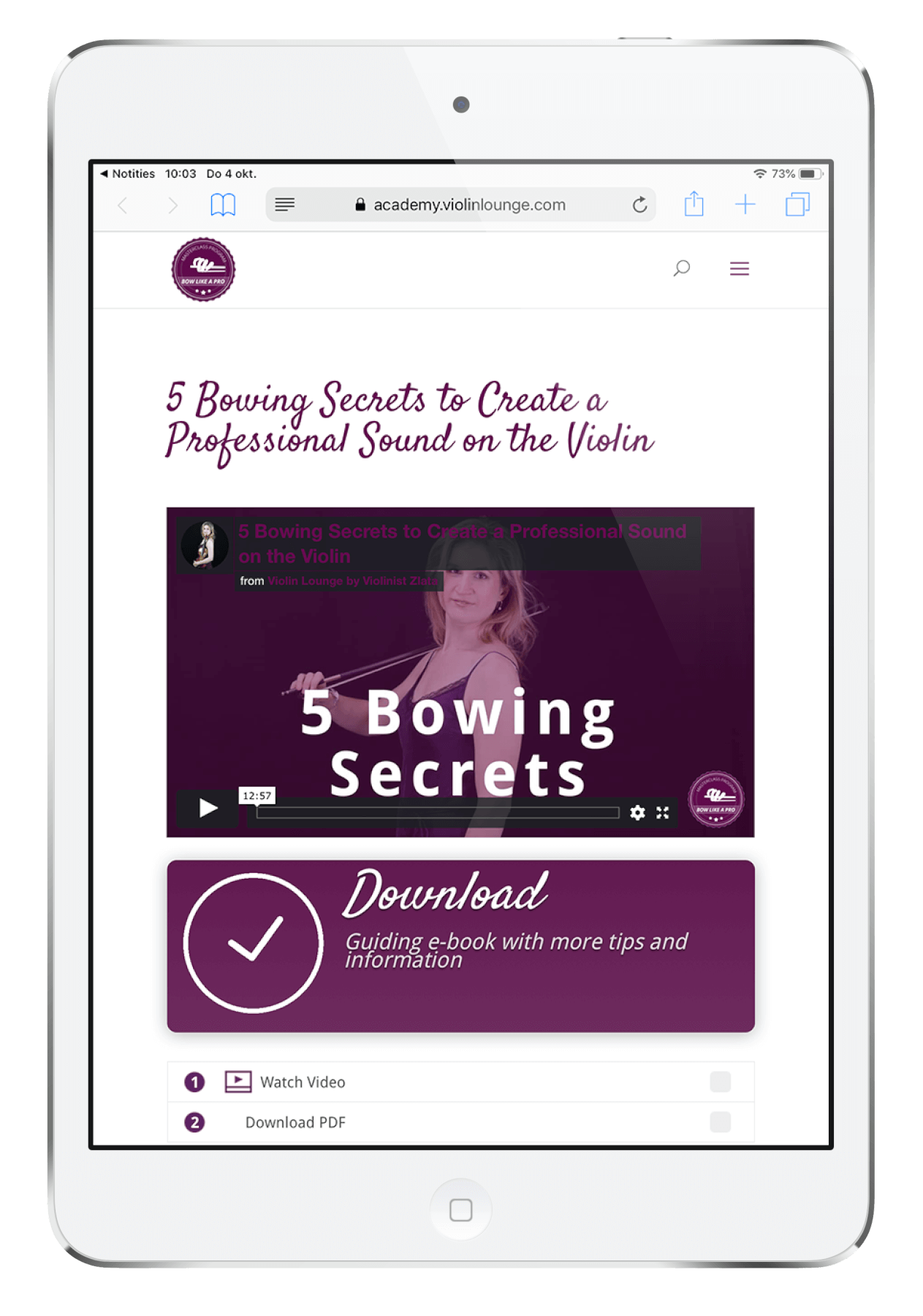STOP Tolerating a Bad Sound Quality on the Violin
Your general playing technique improves, but your tone production is behind?
Perhaps you make this mistake in practicing the violin:
Do you catch yourself not minding a bad tone when you’re practicing scales for intonation or when you’re discovering a new piece?
Everytime you ignore a bad sound, this is what you tell your mind and body to do.
Practice makes permanent, so be very consious about what you make permanent
If you are NOT minding your bowing technique and sound and you’re playing with a vague tone, this is what you’ll automatically do in the future.
What you want to automate is a healthy sound with straight bowing, fluent movement in your bow hand and a beautiful sound.
Don’t be ashamed to make a full sound when practicing a piece you can’t play yet
A lot of violin players make short vague bow strokes, because they don’t want to play something they don’t know yet out loud.
Think about the end result: you want to play the piece technically correct with a great sound and expression. If you can’t play the right rhythm yet, if some notes are out of tune, please at least make sure that the sound quality is good. From that it’s so much easier to improve further on other areas.
Improve your violin bowing technique
Enjoy my FREE mini Masterclass 5 Bowing Secrets to Create a Professional Sound on the Violin

Hi! I'm Zlata
Classical violinist helping you overcome technical struggles and play with feeling by improving your bow technique.
A good quality sound helps you improve in other areas: intonation (playing in tune), rhythm, articulation and expression
With a vague tone, you can’t hear what you’re doing and correct it
You might want to cover up your mistakes by playing softly with short bow strokes, but this doesn’t give you the opportunity to correct these mistakes.
Play everything with a full healthy tone, even the soft piano parts
If you notice a mistake, zoom in and correct it. Do something about your mistakes instead of ignoring them.
Don’t play through the piece and hope that you’ll get it right the next time
With a good tone, you’ll hear what goes wrong. Stop and analyse it. Repeat that couple of notes slowly. Fix it. Read more about slow practice here.
In your next practice session, keep your ears and heart open for a good sound.
Let me know in the comments below what difference you notice in the results from your pratice session.


0 Comments